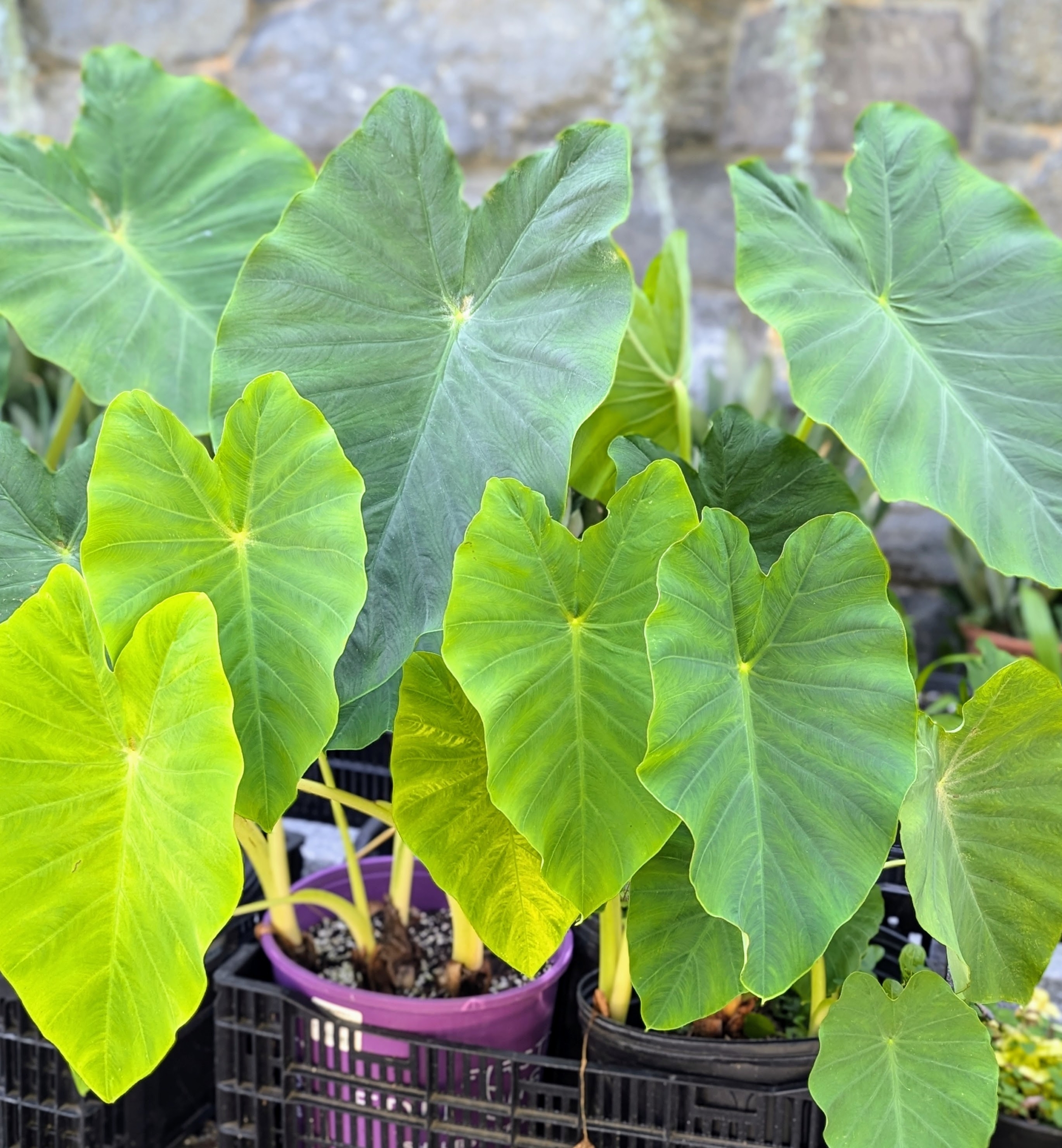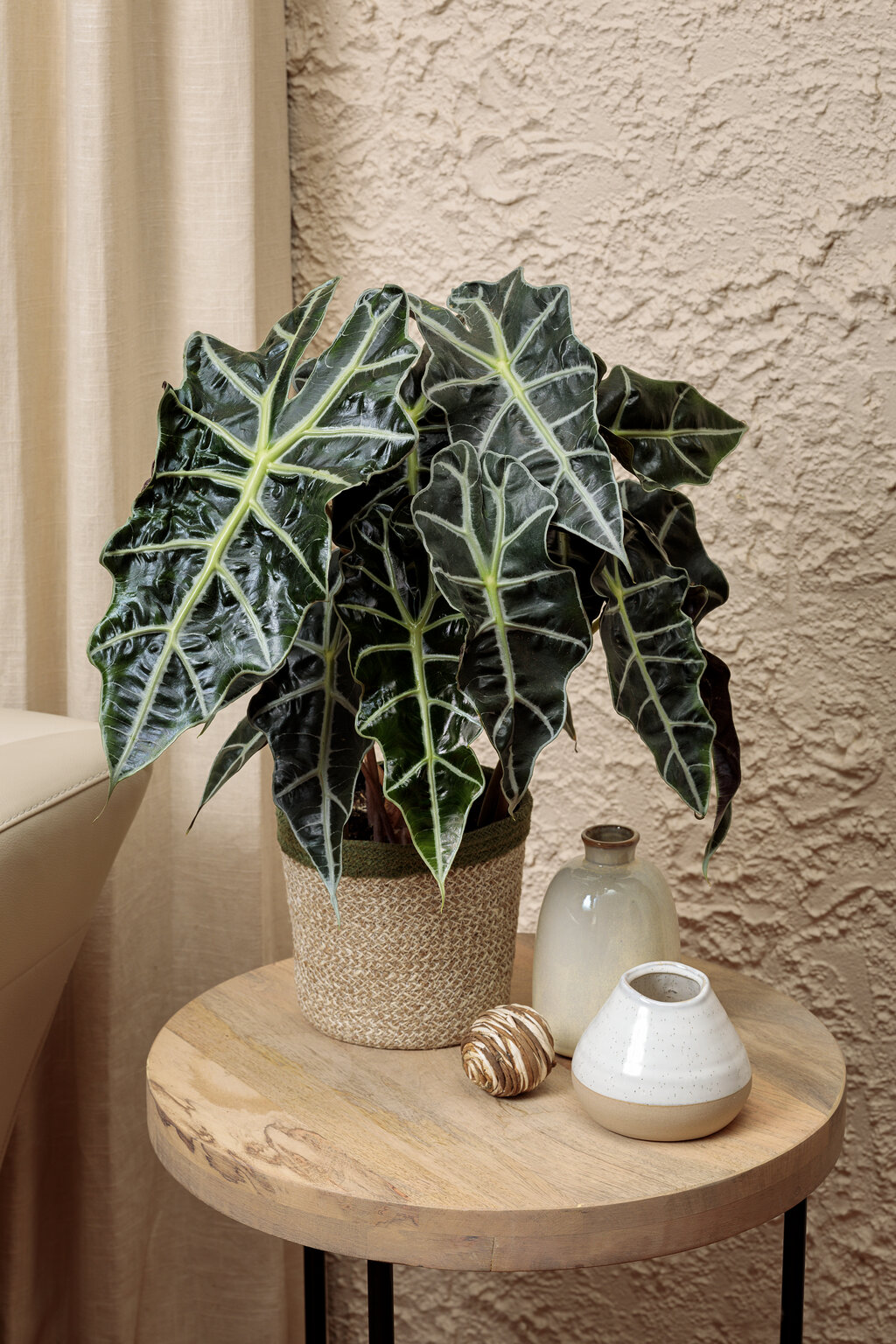What Exactly is an Alocasia?
Alocasias belong to the Araceae family, which also includes other cool plants like peace lilies and pothos. What makes Alocasias stand out are their impressive leaves. These can come in all sorts of amazing patterns, textures, and colors, from deep greens and purples to silvery veins that look almost painted on. Some popular types you might have seen or heard of include the Alocasia Polly (with its deeply lobed leaves), the Alocasia Zebrina (known for its zebra-striped stems), and the Alocasia Macrorrhiza (which can get seriously huge!).
Why All the Fuss About Alocasias?
People are drawn to Alocasias for a few key reasons. First off, they’re visually stunning. They make a real statement in any room. If you’re looking for a plant that’s more than just a bit of greenery, an Alocasia definitely fits the bill. Secondly, they can be a bit more on the “intermediate” side when it comes to care, which some plant enthusiasts find appealing. It’s a chance to level up your plant parenting skills.

Getting the Light Right for Your Alocasia
Alocasias generally like bright, indirect light. Think of the kind of light they’d get under the canopy of a rainforest – bright but filtered. Direct sunlight can be too harsh and can actually scorch their delicate leaves. An east or west-facing window where the light is diffused is usually a good spot. If you notice the leaves looking pale or stretched out, it might not be getting enough light.
Watering Your Alocasia Without Drowning It
Watering is often where people can run into trouble with Alocasias. They like to be kept consistently moist, but definitely not soggy. Overwatering can lead to root rot, which is a big problem. A good rule of thumb is to water when the top inch or two of soil feels dry to the touch. Make sure your pot has good drainage so excess water can escape. During the winter months when the plant’s growth slows down, you’ll need to water less frequently.

Humidity is Your Alocasia’s Best Friend
Coming from tropical environments, Alocasias thrive in high humidity. Dry air can cause the leaf edges to turn brown and crispy. If your home is on the drier side, especially during winter with the heating on, you might want to think about ways to increase humidity. You could use a humidifier, place the pot on a pebble tray filled with water (making sure the bottom of the pot isn’t sitting directly in the water), or group your Alocasia with other plants.
The Right Soil Makes a Difference
Alocasias need a well-draining potting mix that still holds some moisture. A mix that includes things like perlite, coco coir, and some organic matter usually works well. Avoid heavy, dense soils that will stay wet for too long.
Feeding Your Alocasia
During the active growing season (usually spring and summer), you can give your Alocasia a diluted balanced liquid fertilizer every two to four weeks. Hold off on fertilizing during the fall and winter when the plant is resting.
A Few Things to Watch Out For
Alocasias can be a bit dramatic sometimes. Yellowing leaves can be a sign of overwatering, underwatering, or even a nutrient deficiency. Drooping leaves might mean it’s thirsty or not getting enough light. Keep an eye out for common houseplant pests like spider mites and mealybugs, and deal with them promptly if they appear.
Alocasias and Dormancy
It’s worth noting that some Alocasias can go through a period of dormancy, usually in the cooler months. You might notice the leaves starting to die back. Don’t panic! This is a natural part of their cycle. During dormancy, reduce watering significantly and hold off on fertilizing. Once the weather warms up and they sense more light, they should start putting out new growth again.
Alocasia plants are truly captivating additions to any plant collection. While they might need a bit more attention than some other houseplants, the reward of those stunning leaves is well worth the effort. By understanding their needs for light, water, humidity, and the right soil, you can keep your Alocasia thriving and enjoy its tropical beauty for years to come.
Frequently Asked Questions About Alocasia Plants
Are Alocasia plants toxic to pets?
Yes, Alocasia plants contain calcium oxalate crystals, which can be toxic if ingested by pets (cats and dogs) and even humans. They can cause irritation of the mouth, tongue, and throat, as well as stomach upset. It’s best to keep Alocasias out of reach of curious pets and small children.
Why are the leaves of my Alocasia turning yellow?
Yellowing leaves on an Alocasia can be due to several reasons, including overwatering, underwatering, nutrient deficiencies, or even stress from a change in environment. Check the soil moisture first. If it’s soggy, you might be overwatering. If it’s bone dry, try watering more consistently. If the watering seems fine, consider whether your plant might need fertilizer or if it has recently been moved.
My Alocasia’s leaves are drooping. What should I do?
Drooping leaves can also have a few causes. The most common are likely underwatering or insufficient light. Feel the soil – if it’s dry, give it a good watering. If the soil is moist, consider whether your plant is getting enough bright, indirect light. Moving it to a brighter spot (avoiding direct sun) might help.
How often should I repot my Alocasia?
You’ll generally need to repot your Alocasia every one to two years, or when you notice the roots starting to grow out of the drainage holes. Choose a pot that is only slightly larger than the previous one. Repotting is best done in the spring or early summer when the plant is actively growing.
Can I propagate my Alocasia plant?
Alocasia Plant
